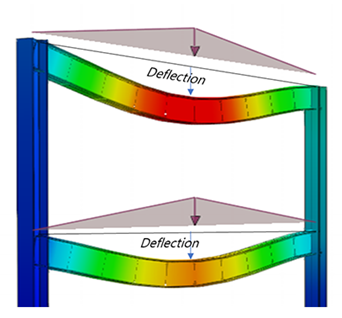Deflection in telecommunication structures refers to the deformation or displacement of a structure from its original position under load. Deflection is a serviceability limit, that is, it does not automatically constitute structural failure, thus there are often differing requirements on the acceptable levels of deflection. There are typically two categories of deflection limits considered in telecoms analyses: General structural deflection limit and Operator’s deflection limit.
The operator’s deflection limit is specified by the site operator in the telecoms industry. They specify levels above which the structure becomes unfit for use based on ancillary equipment operational guidelines and specifications.
The general structural deflection limit is specified by design codes e.g., Eurocode & BS code an offers guidance on the level of deflection that will not cause discomfort/alarm to the site users.
The operator’s deflection limit can be a little generous. We often find that a structure can be within it operator’s limit but has exceeded its general deflection limit, therefore a decision must be made. Designing a structure that is below the general structure deflection limit may incur additional costs which the site operator may be opposed to. It is responsibility of the engineer to ensure that all stakeholders participate in the decision making and to balance the interest of all parties.
At KA Engineering Group, we leverage our extensive engineering experience to accurately design any form of telecoms structure ranging from complex GDC to basic DD analysis. We take responsible steps to consider, advise, and optimise each site, ensuring cost-effective design, installation, and maintenance for build contractors and efficient utilisation for operators.
Contact our expert team at: info@ka-engroup.com to learn more and discuss how we can best serve your needs.


